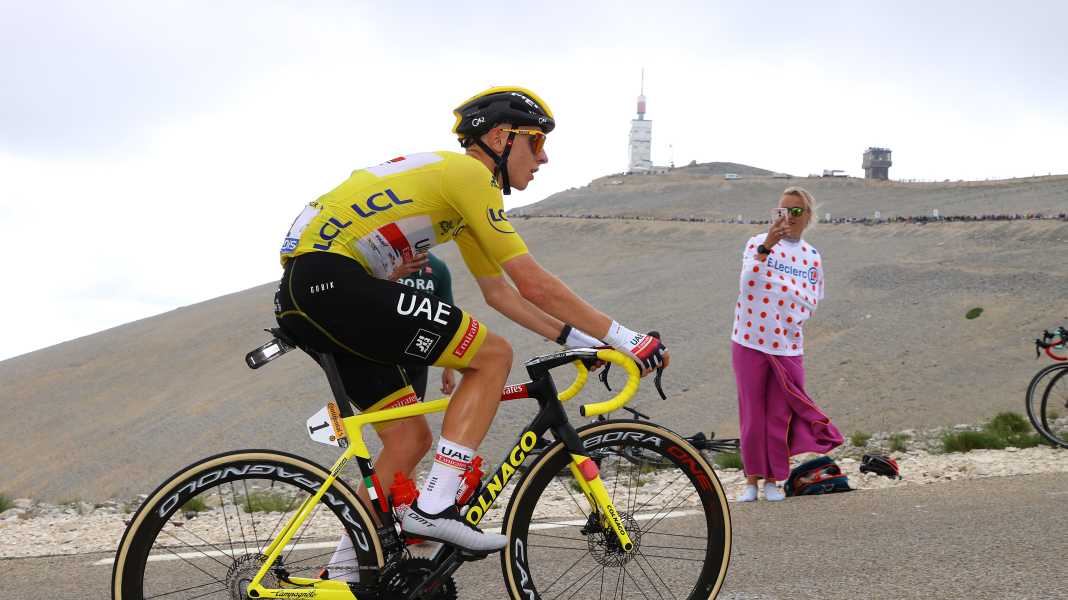
Tour de France 2025 - Stage 16: Montpellier - Mont Ventoux | 171,5 Kilometers
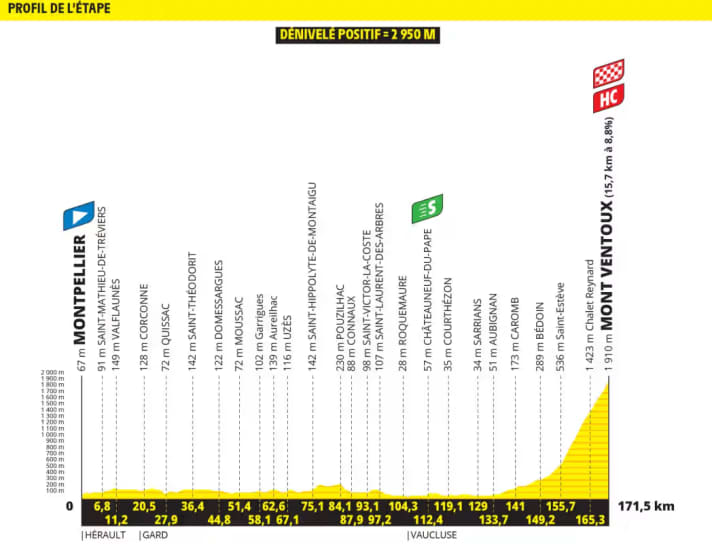
After a rest day, the riders will have the opportunity to warm up over 150 kilometers before the mighty Mont Ventoux rises up. Based on how the race has gone so far, we can assume that despite the predictably tough end to the stage, there will be attacks early on.
However, those who seek salvation in a breakaway will probably not be the first to cross the finish line. Tadej Pogačar will certainly want to be celebrated as the winner on this iconic climb and will keep UAE, in the form of Nils Politt, on a long leash. The team will then likely escort Tadej Pogačar to the flatter passage at Chalet Reynard. As soon as the climb picks up again after that, the attack could come at any time.
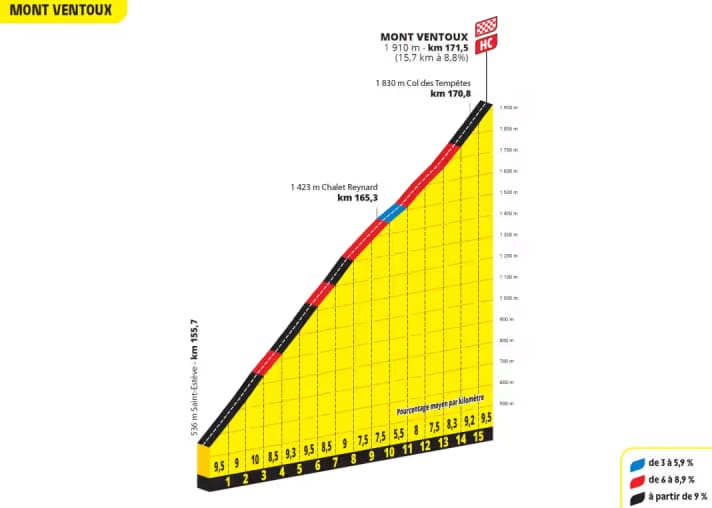
If a rider is feeling very good and wants to attack in the rankings, the steeper beginning of the climb is generally the best place to do so. The longer the attack, the greater the potential lead! Is Jonas Vingegaard having a great day and does he have the legs for a daring attack?
In our simulation of the day, we give our avatar the superpowers of Tadej Pogačar and see what riding times this results in for the different bikes.
The number of the day: Four seconds
The Cervélo S5 gains a four-second lead over the Tarmac SL8 in our scenario – thanks to better aerodynamics. Depending on how strong the wind blows, aerodynamics become even more important in the bare upper part of the mountain, even though the riding speed is not particularly high.
The (almost) complete field at a glance*
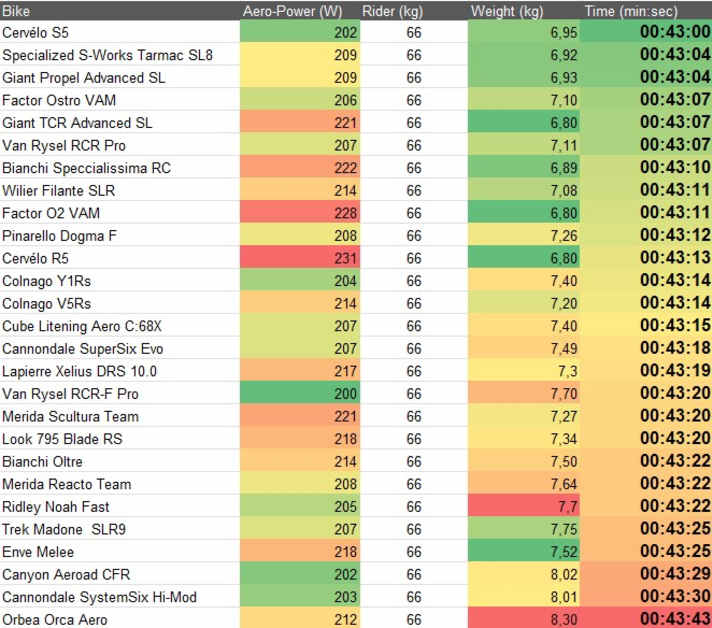
The table shows the riding times for the final climb with the different bikes. As outlined here, the average climbing rate would be 1,909 meters per hour. As expected, the lightweight bikes are clustered at the top, with aerodynamics tipping the scales.
*) The calculations are based on the bikes tested by TOUR in the laboratory and wind tunnel. The machines used in the Tour de France may differ in detail. Of course, we were not yet able to examine last-minute prototypes. Background information on the simulation.
Review of stage 15
Tim Wellens' victory on stage 15 underscores the importance of aerodynamics for a long breakaway. But timing is also important. The Belgian skillfully launched his attack on a narrow section of the road and pedaled hard in the last hairpin bend, while his closest pursuer, leaning into the bend, preferred to skip a pedal stroke to avoid touching the ground. Wellens then accelerated his machine to over 80 km/h, clearly having enough gear reserves to keep pedaling even at very high speeds, and adopted a perfect posture.
There were 43 kilometers of slight downhill to cover before reaching the finish line. Wellens managed to quickly and continuously extend his lead after a small gap had opened. The ingredients for this: determination, a very good position on the bike – and one of the fastest bikes in the peloton as a basis.
This situation perfectly demonstrated that an aero bike is not a fantasy. Good aerodynamics are the key to prevailing against several pursuers. However, the truth is that they were not in agreement. Only then is such a long breakaway possible.
Victor Campenaerts, who has a remarkably small frontal area, sat on his bike in a visibly more aerodynamic position. The Visma pacemaker stole away from the breakaway group and slipped through the wind visibly more effectively than the rest of the group, helped by the unusual time trial helmet that the good time trialist almost always wears. The fact that he was riding one of the fastest bikes, the Cervélo S5, also helped.
Our expert
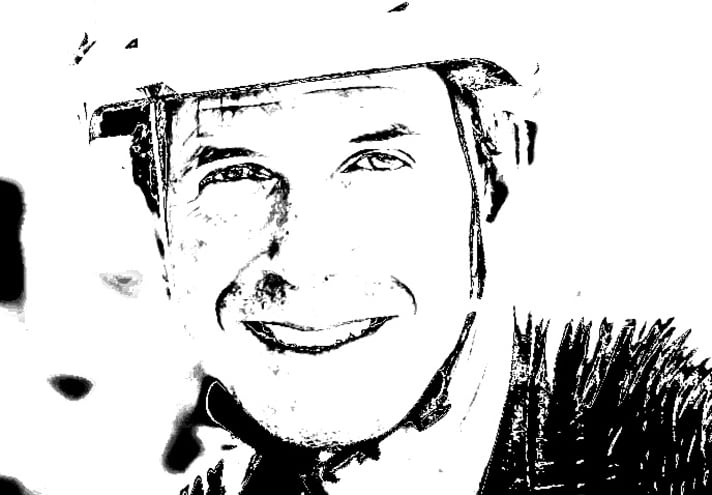
Robert Kühnen studied mechanical engineering, writes for TOUR about technology and training topics and develops testing methods. Robert has been refining the simulation calculations for years, they are also used by professional teams.

